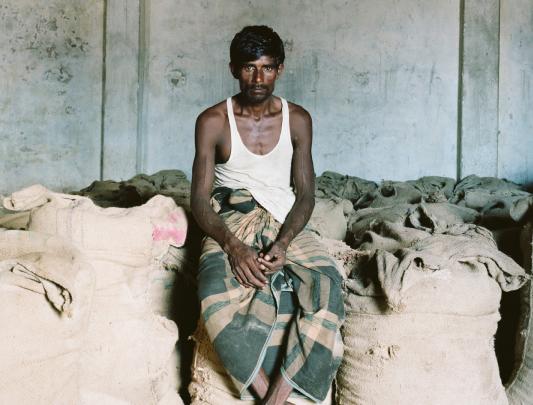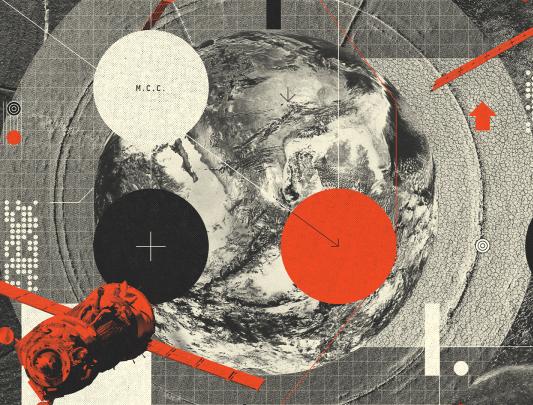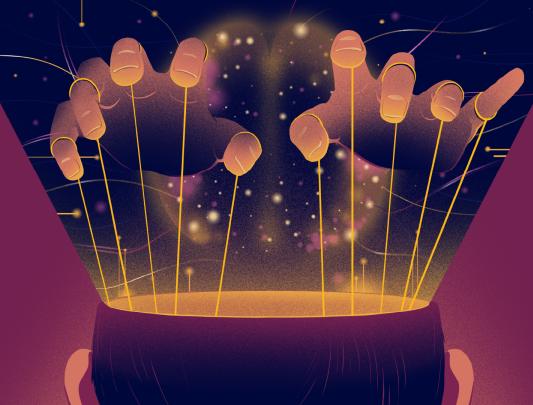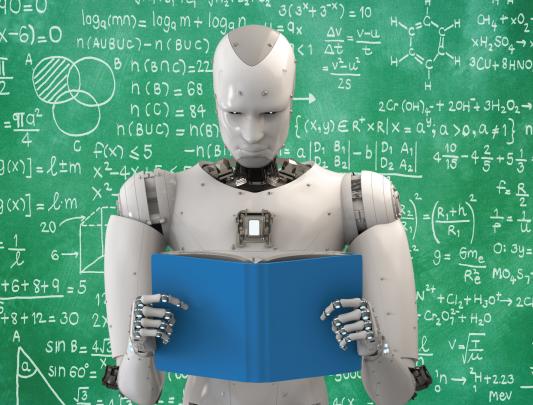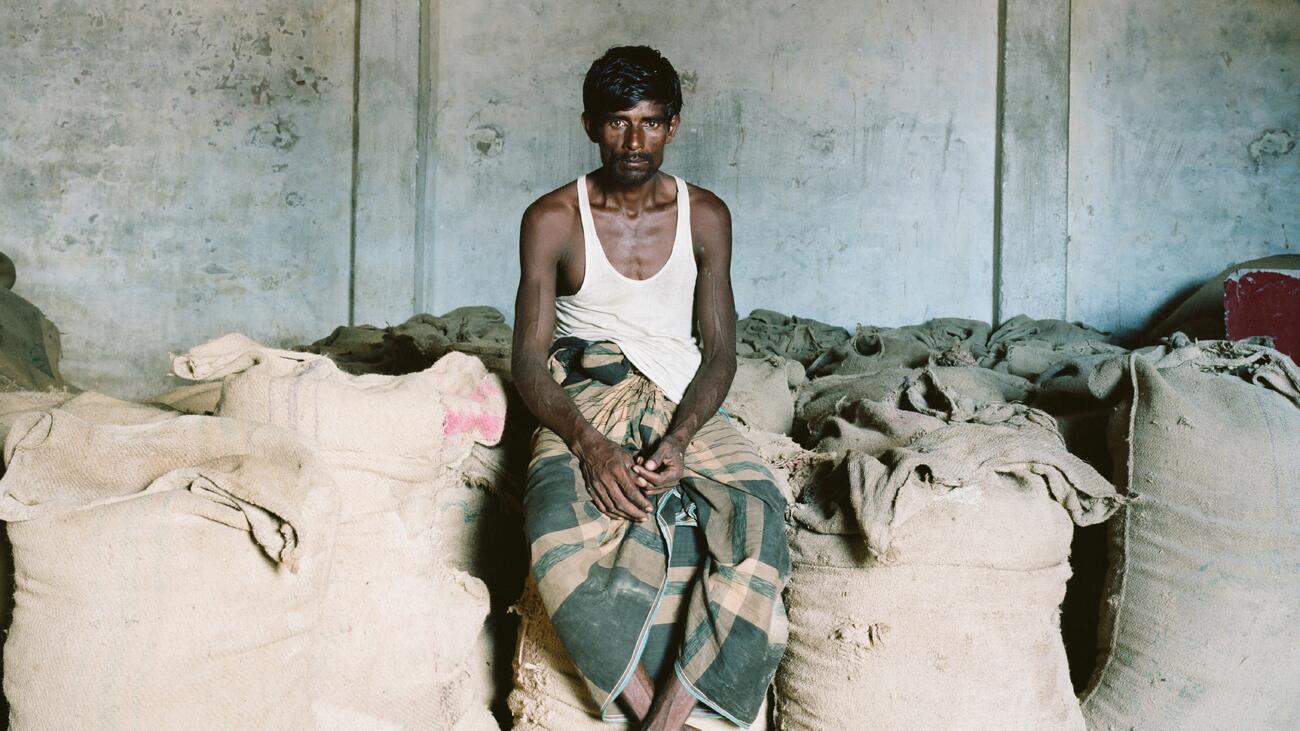
Man in rice store in Dhaka, Bangladesh. Photo by Michael Hall/The Image Bank via Getty Images.
Algorithms + altruism
A tech-enabled strategy for beating poverty.
Dr. Khan Jahirul Islam, an economics lecturer at UBC’s Okanagan campus, has been conducting a field experiment with impoverished communities in rural areas of Bangladesh. His goal is to create a novel working model for the reduction of poverty that, once proven, will be broadly adopted. AI and blockchain technologies are key.
Why is poverty such an enduring problem?
Poverty is primarily due to a lack of appropriate values and attitudes within society, which leads to a highly unequal distribution of resources, opportunities, and power. It is the result of socio-economic structures we have built over the decades that lead to multiple deprivations – both material and non-material.
As a complex and multidimensional phenomenon, poverty involves many chicken-and-egg problems. For example, poor health causes poverty; at the same time, poverty causes poor health. Tackling it requires simultaneous actions on multiple fronts, but there is a failure of co-ordination. We focus too much on only one dimension of poverty, and that is income.
Another important consideration for poverty reduction is the quality of institutions – economic, political, legal, cultural. Unfortunately, corruption is a big issue in many countries that needs to be dealt with.
Describe the communities with whom you are working in Bangladesh.
Like the majority of poor people all over the world, they live in a rural area and rely on the traditional agricultural sector. The cost of agricultural production has increased significantly over time, and that is making it very difficult for them to make it profitable. The cost of healthcare services and education is also very high for them. This creates a vicious cycle of poverty that is not easy to deal with using traditional approaches to poverty reduction.
How is your approach to poverty reduction different?
I am developing a multidimensional and incentive-based poverty-reduction model. Whereas existing models typically use income, health, and education as their measures of poverty (with a strong emphasis on income), my approach also takes into account financial and social exclusion.
About 50 per cent of the world’s adult population are systematically excluded from the mainstream financial system because they don't have enough money. Yet there are microcredit programs all over the world with recovery rates of close to 98 per cent, even when interest rates are very high. This proves that low-income people are creditworthy, but due to faulty credit theories and models we have excluded billions of them.
Among other interventions in Bangladesh, I am providing loans to support income generation through the leasing of cultivable land, and access to healthcare and education. All these loans are interest-free because I believe that profiting from poverty and reducing poverty cannot go hand in hand.
In addition to financial exclusion, poor people feel excluded socially. The model’s built-in inclusion feature helps create a friendly environment where project beneficiaries feel like they belong. I am also cultivating more humanitarian values and attitudes among non-poor community members by enabling open discussion. A sense of inclusion creates a strong incentive to engage in the other dimensions of the poverty-reduction project.
How do you intend to integrate AI and blockchain technologies into your work?
My plans regarding blockchain technology involve supply chains. In Bangladesh, it is very common for the price of agricultural products in the retail market to be 10 to 20 times higher than the price the farmer receives from intermediaries and middlemen. Blockchain technology allows for the creation and management of digital identities for individuals and organizations, and the storage of automated smart contracts made between them. Data is recorded and stored in a decentralized way that means that all parties to a contract have access and none can alter it.
Smart contracts improve efficiency and transparency, and can eliminate the many intermediaries between the farmers and the retail sellers. Their use in supply chain management, particularly in the rural agricultural sector, would be revolutionary. My estimation is that we could boost household incomes by 30 to 50 per cent.
I intend to use AI technology for generating credit scoring to inform my lending. Unlike traditional credit scoring, which is based on net worth and collateral, the AI will generate an incentive-to-repay score, considering past history and the relationship with the applicant. This repayment incentive score will carry significant weight, alongside other factors like financial status, health, and education, in determining the overall credit score. It will enable me to more efficiently assess who to prioritize. Without AI, these decisions take lots of time and require more human involvement.
AI technologies and smart contracts could be used in similar ways for managing the Bangladeshi government’s cash-transfer and subsidy programs. Currently, these are manually managed, and it is well known that the majority of funds do not reach the intended recipients, due to corruption.
In terms of healthcare, AI is going to change treatment systems all over the world, but my goal is to adapt it for use in rural areas. The poor people I am dealing with often haven’t seen a physician in many years, as the cost of diagnosis and treatment is beyond their means. I hire doctors three times a year to come to the villages and provide community members with free consultations, diagnosis, and medication.
AI is a boon for the collection and management of patient data. The tech can be used to summarize consultations, store patient histories, create personalized treatment plans, and help doctors to prescribe more efficiently. Ultimately, it would reduce the need to see a doctor in person. This type of technology is not very expensive, and the cost of using it is marginal.
“The use of smart contracts in supply chain management, particularly in the rural agricultural sector, would be revolutionary. My estimation is that we could boost household incomes by 30 to 50 per cent.”
Another promising area for intervention is education. Financial literacy is a big issue. Even if I gave people thousands of dollars, it doesn't mean that they would be able to eliminate their poverty. Applications such as chatbots and virtual classrooms are becoming cheaper. Customized versions could help poor people improve their financial literacy, general education, and even health education.
I’d also like to develop an app to foster community connection and encourage a positive change in attitudes towards poor people. This is already beginning to happen; young and energetic people from local villages are expressing interest in volunteering for my healthcare program.
Access to the internet is not expensive. I envision a community hub where villagers can access online tools, but for some services they will need a smartphone of their own. However, I think the benefit of using a smartphone and internet will be much higher than the cost of using these technologies.
If your intention is to scale up, where will the money for loans come from?
I am currently running the project alone with the help of my family members, but I think that once people recognize the transparency and efficiency that is possible using AI and blockchain, more private lenders will come on board. Without these technologies, particularly in underdeveloped countries and developing countries, there is so much complexity in every step, and many barriers.
As well as loans, I intend to facilitate donations. Corruption is a big issue with giving, so I plan to develop a reliable app that links potential donors directly to poor households. I will create a database of impoverished households with the socio-economic information that they are willing to share with the public. Anyone, from any corner of the world, would know who they are supporting and why.
At the end of the day, my dream is to prove that moneylenders do not have to be exploitive. Moneylenders like me can be blessings, depending on the purpose of the loan and the values and attitudes on which it is based.
Once I have presented the output of my projects to different stakeholders, including government, lenders, and other communities, I am confident I can attract the support to expand them in terms of scale and scope.
We’ve heard promises before about the potential of cutting-edge tech for lifting people out of poverty, but the results have been mixed. Why is that?
Due to AI, global GDP is projected to increase by about $16 trillion (almost 14 per cent) by 2030. But unless we have inclusive growth, it won’t have a positive impact on poverty and inequality. The benefit goes first to rich countries and rich people within those countries. That is why policymakers need to think about how to utilize these revolutionary technologies, because if we can make appropriate policies, blockchain and AI have huge potential for reducing poverty. Now is the time.

























